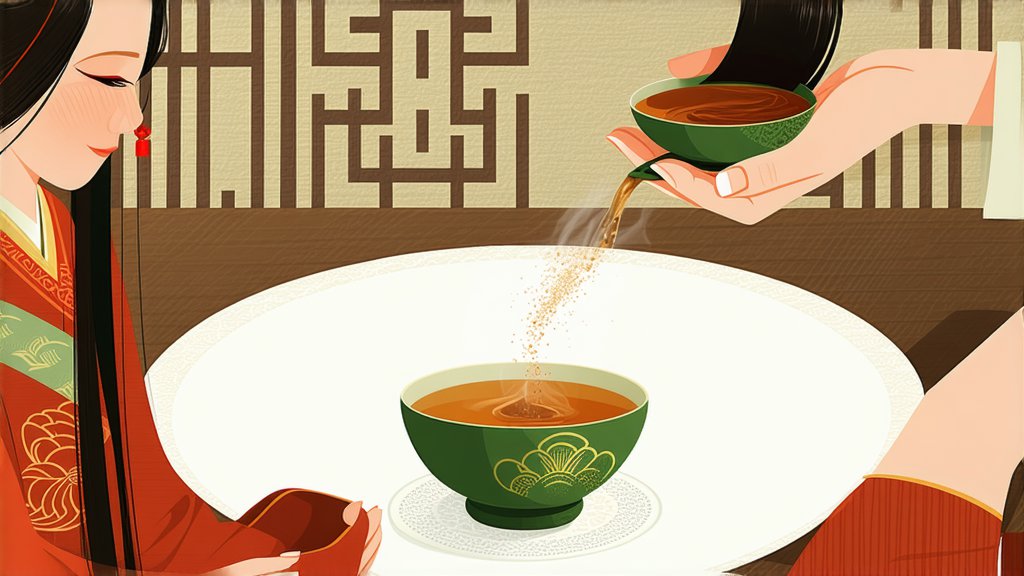
Chinese dark tea, also known as "Heicha" in Mandarin, is a category of tea that has been cherished for centuries in China for its unique fermentation process and health benefits. Among the various types of dark tea, Pu-erh stands out as one of the most famous and complex, with a history that dates back to the Tang Dynasty. This article will delve into the history, varieties, production techniques, and tasting methods of Pu-erh tea, providing an insight into this intriguing aspect of Chinese tea culture.
History of Pu-erh Tea
The history of Pu-erh tea is as rich as the tea itself. It is believed to have originated in the Yunnan province of China, where the climate and soil conditions are ideal for the cultivation of tea plants. The name "Pu-erh" comes from the town of Pu'er, which was a significant trading post for tea along the ancient Tea Horse Road. This route facilitated the exchange of tea for horses with neighboring countries, and Pu-erh tea became a prized commodity.
Varieties of Pu-erh Tea
Pu-erh tea is divided into two main categories: raw (sheng) and ripe (shou).
-
Raw Pu-erh (Sheng): This type of Pu-erh is made from sun-dried green tea leaves that are then compressed into cakes, bricks, or other shapes. The fermentation process for raw Pu-erh is a natural one, occurring over many years as the tea ages. It is known for its sharp, grassy flavors that mellow and develop complexity over time.
-
Ripe Pu-erh (Shou): Ripe Pu-erh is created through a process of artificial fermentation, known as "wet piling," which accelerates the aging process. This results in a tea with a more earthy, mellow flavor profile that is ready to drink soon after production.
Production Techniques
The production of Pu-erh tea is a meticulous process that involves several steps:
-
Harvesting: The tea leaves are plucked from the Camellia sinensis plant, typically the larger, older leaves are used for Pu-erh.
-
Withering: The freshly picked leaves are spread out to wither, which helps to reduce their moisture content and initiate the oxidation process.
-
Killing Green: This step halts the oxidation process by heating the leaves, which is essential for raw Pu-erh to prevent it from becoming a green or oolong tea.
-
Rolling and Shaping: The leaves are then rolled to break down the cell walls and release the natural juices, which aids in fermentation. For raw Pu-erh, the leaves are left to dry naturally, while for ripe Pu-erh, they are piled and moistened to begin the fermentation process.
-
Fermentation: This is where the two types of Pu-erh diverge. Raw Pu-erh undergoes a slow, natural fermentation that can take decades, while ripe Pu-erh is subjected to a controlled, accelerated fermentation process.
-
Pressing: Once the fermentation is complete, the tea is pressed into various shapes, such as cakes, bricks, or tuo cha (bowls), which are then wrapped and stored for aging.
Tasting Methods
To fully appreciate the depth and complexity of Pu-erh tea, it is essential to follow a proper tasting method:
-
Preparation: Pu-erh is typically brewed using a Yixing clay teapot or a Gaiwan. The tea is broken into small pieces and rinsed with hot water to remove any dust or impurities.
-
Brewing: The tea is then steeped in hot water, with the first infusion often discarded as it is considered to "wake up" the tea. Subsequent infusions are brewed for varying lengths of time, with each infusion revealing different aspects of the tea's flavor.
-
Tasting: The aroma, color, and taste of each infusion are carefully noted. Pu-erh is known for its earthy, mellow flavors, with hints of wood, fruit, and sometimes a slight sweetness. The aftertaste, or "hui gan," is also an important aspect of the tasting experience.
Health Benefits
Pu-erh tea is highly regarded for its health benefits, which are attributed to its fermentation process. It is believed to aid in digestion, lower cholesterol, and help with weight loss. The aging process of Pu-erh also contributes to its antioxidant